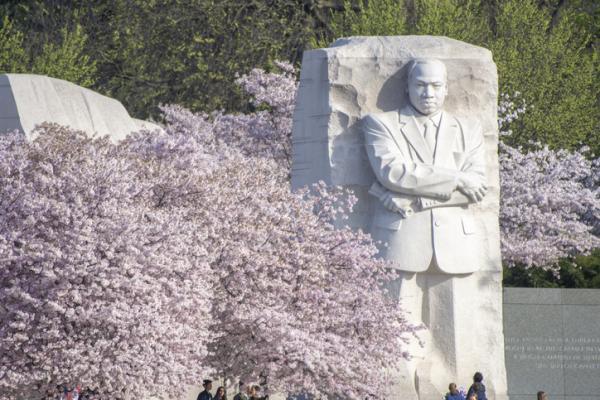America's Most Endangered Places 2002

Eleven historic sites in danger of being lost forever
 |
In a report released in early June 2002, the National Trust for Historic Preservation (www.nationaltrust.org ) listed 11 historic sites across America that are in danger of being lost forever. Whether these sites are single buildings or entire districts, Native American archaeological remains or 20th-century theaters, urban landmarks or rural landscapes, they are all one-of-a-kind treasures that are being threatened, by new construction and urban sprawl or simply by neglect and decay.
Although the listing does not mean that a site will automatically receive protection or funding, it does draw attention to the problem and helps garner support for preservation efforts. After the west side of downtown Baltimore was put on the list in 1999, the city of Baltimore scrapped its plan to demolish the historic district and came up with an alternate scheme that saved a majority of the buildings by adapting them for new uses.
The National Trust has identified more than 135 endangered historic places since 1988. Here are the sites that were chosen for the 2002 list.
1. Historic Bridges of Indiana: Although Indiana's historic covered bridges have come under increasing protection in recent years, more than half of the state's metal bridges built between 1860 and 1930 have been torn down and replaced with modern structures. The older bridges are being demolished despite the fact that renovation is often less costly than building new bridges. Preserving the bridges means preserving a piece of the state's—and nation's—engineering and transportation past.
 2. Teardowns in Historic Neighborhoods, Nationwide: Across the nation, historic homes are being demolished in record numbers to make way for larger modern houses that destroy the historic character of their neighborhoods. In Denver, Colo., some 200 houses were demolished last year. Even the work of famed architect Frank Lloyd Wright is at risk. In the Chicago suburb of Bannockburn, a house designed by Wright in 1956 was purchased last year by an owner who planned to demolish it; however, due to public outcry it was eventually sold to a buyer interested in preserving it.
2. Teardowns in Historic Neighborhoods, Nationwide: Across the nation, historic homes are being demolished in record numbers to make way for larger modern houses that destroy the historic character of their neighborhoods. In Denver, Colo., some 200 houses were demolished last year. Even the work of famed architect Frank Lloyd Wright is at risk. In the Chicago suburb of Bannockburn, a house designed by Wright in 1956 was purchased last year by an owner who planned to demolish it; however, due to public outcry it was eventually sold to a buyer interested in preserving it.
3. Rosenwald Schools, Southern U.S.: In 1913, Julius Rosenwald, CEO of Sears, Roebuck and Company, joined with African-American educator Booker T. Washington in an innovative program to improve education for rural African Americans. Over the next 20 years the Rosenwald Fund was used to construct 5,300 school buildings in 15 states in the South and Southwest. The schools, which were designed by professors at Washington's Tuskegee Institute in Alabama, ranged in size from one to many rooms. Following integration, the Rosenwald schools were often closed. Many were later destroyed, while others were simply abandoned.
 4. Chesapeake Bay Skipjack Fleet, Maryland: The wooden sailing vessels known as skipjacks once numbered about 1,000 in the bay. However, due largely to a decline in the bay's oyster population and the high cost of maintaining a wooden boat, the number of skipjacks in commercial use has dwindled to about a dozen. A task force appointed by the governor is currently studying the problem of how the fleet of traditional bay-craft might be maintained.
4. Chesapeake Bay Skipjack Fleet, Maryland: The wooden sailing vessels known as skipjacks once numbered about 1,000 in the bay. However, due largely to a decline in the bay's oyster population and the high cost of maintaining a wooden boat, the number of skipjacks in commercial use has dwindled to about a dozen. A task force appointed by the governor is currently studying the problem of how the fleet of traditional bay-craft might be maintained.
5. Pompey's Pillar, Yellowstone County, Mont.: Located on the south bank of the Yellowstone River, Pompey's Pillar is a 100-foot-tall sandstone butte that bears the only physical evidence of the Lewis and Clark expedition: an inscription carved by William Clark, showing his name and the date, July 25, 1806. The pillar is also of great spiritual importance to local Native American tribes. Currently, however, a grain exporting company has plans to build a 100-acre transport facility nearby. The 150-foot grain elevators and noise and dust from large trucks and freight trains will permanently disfigure the pristine quality of the landscape surrounding this site.
 6. St. Elizabeth's Hospital, Washington, DC: Established in 1855 as the first large-scale psychiatric hospital run by the federal government, St. Elizabeth's set a pattern for the humane treatment of the mentally ill in other facilities across the country. Although the main building has been designated a National Historic Landmark, it is in a state of disrepair and is no longer used. Other Victorian buildings on the 300-acre complex are also crumbling and vacant.
6. St. Elizabeth's Hospital, Washington, DC: Established in 1855 as the first large-scale psychiatric hospital run by the federal government, St. Elizabeth's set a pattern for the humane treatment of the mentally ill in other facilities across the country. Although the main building has been designated a National Historic Landmark, it is in a state of disrepair and is no longer used. Other Victorian buildings on the 300-acre complex are also crumbling and vacant.
7. Missouri River Valley Cultural and Sacred Sites, Mont., N.D., and S.D.: The Upper Missouri River Valley is the site of ancestral Native American villages as well as old homesteads and structures from the fur-trading era. Reservoir and dam projects operated by the federal government have altered the water levels of the river, causing erosion of the shoreline and the destruction of sensitive archaeological sites.
8. Guthrie Theater, Minneapolis, Minn.: This important cultural landmark was slated for demolition until Gov. Jesse Ventura vetoed state funds needed to build a new stage complex on the site. The company that owns the theater, however, has set about an aggressive fundraising campaign and still hopes to demolish the theater and replace it with a parking garage and sculpture garden. A coalition of well-known architects, performers, and local citizens has formed recently to try to preserve the Guthrie, citing its excellent acoustics and intimate performance space.
9. Hackensack Water Works, Oradell, N.J.: Built on a man-made island in the Hackensack River, the water works opened in 1882 as a pumping station, supplying safe, clean water to much of northern New Jersey. Today it is one of the most intact historic industrial plants of its kind. Although a move is underway to demolish most of the complex (it has been vacant since 1990), a nonprofit group has developed a restoration proposal that includes plans for a museum, an education center, and an environmental center. The fate of the water works now rests with the state of New Jersey, which has final authority over what happens to it.
10. Kw'st'an Sacred Sites at Indian Pass, Imperial County, Calif.: For thousands of years, Indian Pass has been in continuous use by the Quechan and other Colorado River Indian tribes for religious pilgrimages and ceremonies. Pottery shards, petroglyphs, and ancient rock sculptures have lain undisturbed in this rocky desert landscape. Now a giant multinational mining corporation has plans to dig a 1,600-acre gold mine there that will leave gaping open pits up to 880 ft deep and a cyanide heap-leach pile as high as 300 ft. During the Clinton administration, Interior Secretary Bruce Babbitt refused to grant a permit for the mine because it would cause irreparable damage to the land and interfere with the traditions of the native tribes. The Bush administration, however, has reversed that ruling.
11. Gold Dome Bank, Oklahoma City, Okla.: One of the most recognizable landmarks in Oklahoma City, the Gold Dome Bank was constructed in 1958, its signature 150-foot-wide dome modeled on the geodesic dome designed by architect/engineer R. Buckminster Fuller. The current owner, Bank One, has petitioned the city for a permit to demolish the domed structure and replace it with an ordinary building typical of suburban strip malls. Supporters of the dome have established a website (www.savethedome.net/ ) and are working to raise funds for preservation.







